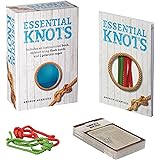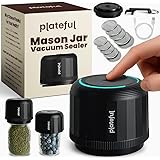The ingenuity demonstrated in the video above, highlighting a “survival hack” for optimizing precious resources like soap in austere environments, underscores a critical aspect of wilderness preparedness: hygiene management. In any outdoor or emergency scenario, the longevity of supplies, particularly those related to health and sanitation, is paramount. Effective resource stewardship ensures not only personal comfort but also significantly mitigates risks associated with illness and infection, which are often exacerbated in situations where conventional amenities are absent.
The perception that hygiene is a luxury in the wild is often challenged by grim realities. Maintaining cleanliness is, in fact, a foundational element of survival, directly impacting health and operational effectiveness. Pathogen load, if left unaddressed, can rapidly compromise an individual’s or group’s capacity to function, transforming minor discomforts into debilitating illnesses. Therefore, strategic approaches to managing consumables like soap are not merely about convenience; they are integral to a robust survival strategy.
The Underrated Imperative of Wilderness Hygiene
The importance of hygiene in remote or austere environments cannot be overstated. A failure to manage personal cleanliness effectively can quickly lead to various health complications, from skin infections to more severe gastrointestinal diseases. Data from historical expeditions and modern military deployments in challenging terrain consistently shows a direct correlation between poor sanitation practices and increased rates of illness. For instance, studies indicate that handwashing alone can reduce the incidence of diarrheal diseases by approximately 30-47%, a crucial statistic when medical aid is hours or days away. In a survival context, even a common cold can impair judgment and physical capability, making hygiene a critical preventative measure.
Furthermore, maintaining morale is often associated with a sense of normalcy and well-being. The simple act of cleaning oneself, even with limited resources, can significantly boost psychological resilience. This aspect is frequently overlooked but is a vital component of long-term survival and group cohesion. The psychological burden of constant uncleanliness can be substantial, contributing to stress and a decline in overall mental fortitude. Therefore, a proactive approach to wilderness hygiene is considered a holistic strategy for both physical and mental resilience.
Pre-Trip Resource Optimization: Beyond the Bar
Effective management of your last soap in the wild truly begins long before stepping onto the trail. Resource optimization involves thoughtful selection and preparation of cleaning agents. This proactive stance ensures that every gram of soap is leveraged to its maximum potential, extending its utility far beyond what might be expected from a standard store-bought bar. Strategic planning regarding soap type and form factor is a fundamental component of competent outdoor preparedness, significantly influencing hygiene outcomes.
Biodegradability: A Non-Negotiable Attribute
When selecting any cleaning agent for use in natural environments, biodegradability is an absolute imperative. Non-biodegradable soaps can introduce harmful chemicals into water sources, disrupting delicate aquatic ecosystems and contaminating drinking water downstream. Numerous studies on environmental impact have highlighted the long-term damage caused by conventional soaps containing phosphates and other synthetic compounds. Therefore, opting for products explicitly labeled “biodegradable” and “eco-friendly” is not merely a preference but an ethical and practical necessity for responsible wilderness use. These specialized formulations break down much faster through natural biological processes, minimizing ecological footprints.
Form Factor: The Advantage of Liquid Concentrates and Soap Leaves
While a traditional bar of soap may be depicted in survival scenarios, more efficient forms are available. Highly concentrated liquid soaps, often found in small, refillable containers, are incredibly potent, with a single drop typically sufficient for handwashing. This allows for precise dosage, preventing wasteful overuse. Furthermore, dehydrated soap leaves, which dissolve instantly upon contact with water, offer an ultralight and highly efficient alternative. These compact forms are preferred by experienced backpackers and survivalists, as their minimal weight and volume contribute to overall pack efficiency. Such options are strategically utilized for their superior resource allocation benefits.
Strategic Portions: Grating and Slicing
To maximize the utility of a standard bar of survival soap, it is often recommended that the bar be grated or cut into smaller pieces prior to departure. Grated soap can be stored in a small, breathable pouch, allowing for controlled dispensing and minimizing the likelihood of the entire bar becoming wet and dissolving prematurely. Alternatively, thin slices can be cut, providing individual single-use portions that are easily managed. This method prevents the entire soap supply from being exposed to moisture and contamination, which can be a common occurrence in humid outdoor conditions. Such portioning strategies ensure that each use is accounted for and waste is minimized, effectively extending the lifespan of the soap significantly.
Ingenious Techniques for Extending Soap Longevity
Once in the wild, the focus shifts to employing smart application methods to conserve the remaining soap. The goal is to generate sufficient lather for effective cleaning using the least amount of product possible. This requires a mindful approach to water usage and an understanding of how soap interacts with different surfaces. These techniques are often practiced by those operating in resource-limited environments, proving invaluable when every ounce counts. Such careful application methods ensure that your last soap continues to provide essential hygiene benefits for as long as possible.
Dilution Ratios: Maximizing Lather from Minimal Product
One of the most effective ways to extend the life of your survival soap is through controlled dilution. A small amount of liquid concentrate or grated soap can be mixed with a larger volume of water in a bottle to create a diluted washing solution. For instance, a 1:10 soap-to-water ratio is often sufficient for handwashing or light cleaning. This pre-diluted mixture prevents overuse by eliminating the temptation to apply full-strength soap directly. This method is especially beneficial in environments where water is also a scarce resource, as less soap means less water is required for rinsing. Optimal dilution is a key principle of resource economy.
Controlled Application: Direct to Scrubbers, Not Skin
Instead of applying soap directly to the skin, which can lead to excessive usage and waste, it is recommended that the soap be applied to a washcloth, sponge, or even a handful of leaves first. This method allows for the creation of a rich lather with a smaller amount of soap, which is then transferred to the body or hands. This indirect application minimizes the dissolution of the entire soap portion, especially when using a bar. The friction of the scrubber against the soap creates suds more efficiently, ensuring that the cleaning agent is distributed evenly without being quickly washed away. This technique is often taught in field hygiene courses for its efficiency.
The “No-Rinse” or Minimal Water Method
In extremely arid conditions or situations where water is severely restricted, alternative cleaning protocols are often implemented. A “no-rinse” method involves using a minimal amount of diluted soap solution, typically applied with a damp cloth, followed by wiping away the suds with another clean, damp cloth. While not as thorough as a full rinse, this technique significantly reduces water consumption and still provides a degree of cleanliness. Some specialized no-rinse soaps are formulated for this purpose, breaking down without leaving a sticky residue. These methods are frequently employed in settings where water conservation is paramount, such as long-term desert survival. Less water is needed, thereby preserving this vital resource.
Improvised Alternatives and Environmental Stewardship
Even with careful planning and conservation, a time may come when the last of your survival soap is gone. In such scenarios, resourcefulness and a deep understanding of natural alternatives become critical. The ability to improvise cleaning agents from the environment, while simultaneously adhering to strict environmental stewardship principles, defines a truly prepared individual. This foresight ensures that hygiene can be maintained even in the complete absence of manufactured products, while also protecting the wilderness. The impact on the surrounding ecosystem is always considered when utilizing natural resources.
Natural Saponins: Plants as Cleaning Agents
Nature itself provides numerous alternatives for cleaning. Many plants contain saponins, natural soap-like compounds that produce lather when agitated with water. Examples include soapwort (Saponaria officinalis), yucca roots, and certain varieties of clematis. Identifying and properly preparing these plants can offer an effective, albeit temporary, substitute for manufactured soap. Knowledge of local flora and their properties is an invaluable skill in a survival context. It is crucial, however, to correctly identify such plants, as some look-alikes may be toxic. Careful research and positive identification are always recommended before utilization.
Ash and Sand: Abrasive Cleansing
For abrasive cleaning, such as removing stubborn dirt or grime from hands or equipment, finely sieved wood ash or clean sand can be employed. Ash, particularly from hardwoods, contains potassium carbonate (potash), which has mild alkaline properties that can aid in breaking down grease. Sand acts as a natural abrasive. These materials are used sparingly and away from water sources to prevent contamination. While not providing the same level of disinfection as soap, they are effective for mechanical removal of dirt. The ecological impact of these methods must always be considered when implemented, ensuring proper dispersal away from sensitive areas.
Water Conservation Protocols
Regardless of the cleaning agent used, water is often the most critical resource in the wild. Strict water conservation protocols are essential. This includes using a minimal amount of water for washing, employing “two-bucket” systems (one for washing, one for rinsing), and capturing greywater for other non-potable uses, such as extinguishing campfires. Awareness of water sources and their replenishment rates is also crucial for sustainable practices. These measures are frequently emphasized in wilderness survival training for their significant impact on resource availability. Responsible water management is therefore a cornerstone of effective outdoor living.
Greywater Management: Protecting the Ecosystem
The proper disposal of greywater (water that has been used for washing) is as important as its conservation. Even biodegradable soaps, when concentrated, can negatively impact local flora and fauna if discharged directly into streams or lakes. Greywater should always be dispersed at least 200 feet (approximately 60 meters) away from water sources, campsites, and trails. It is best to scatter it widely over a large surface area to allow for natural filtration and bioremediation by soil microorganisms. This responsible approach prevents nutrient loading and chemical contamination of sensitive ecosystems. The principles of Leave No Trace are fundamentally applied to all greywater disposal. Environmental protection is upheld through careful waste management.
The ability to manage your last soap in the wild and other critical resources is a hallmark of preparedness and a testament to resourcefulness. These principles, from meticulous pre-trip planning to the application of efficient in-field techniques, collectively ensure that personal hygiene can be effectively maintained even under the most challenging circumstances. Such strategic thinking transforms a seemingly simple bar of survival soap into a powerful tool for health and resilience, thereby extending its utility far beyond initial expectations.
Wilderness Lather Logic: Your Q&A
Why is hygiene important in a survival situation?
Maintaining cleanliness is crucial to prevent illnesses like skin infections and stomach problems, which can be very dangerous when medical help is unavailable. It also helps boost morale and mental well-being.
What kind of soap should I bring for outdoor use?
Always choose soap that is explicitly labeled ‘biodegradable’ and ‘eco-friendly’. This prevents harmful chemicals from contaminating natural water sources and ecosystems.
How can I prepare a bar of soap to make it last longer before my trip?
You can grate the bar of soap or cut it into small, thin slices. This allows for controlled dispensing and prevents the entire bar from becoming wet and dissolving prematurely.
What’s a simple way to use less soap when I’m in the wild?
Dilute liquid soap with water to create a washing solution, or apply bar soap to a washcloth or sponge first instead of directly to your skin. This creates lather efficiently with less product.
How should I dispose of used wash water (greywater) in the wild?
Scatter greywater at least 200 feet (about 60 meters) away from water sources, campsites, and trails. This allows the soil to naturally filter and break down any residues.











